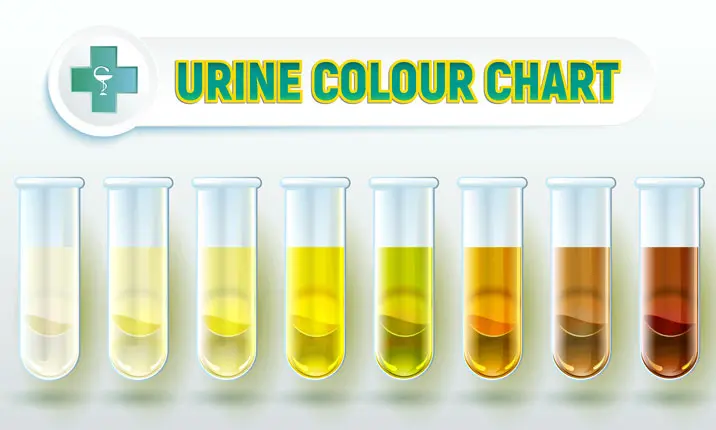Sometimes the color of your urine might indicate a medical issue that has to be treated.
Urine colors can differ depending on what you eat, whatever drugs you’re taking, and how much water you drink. Many of these hues are within the range of what “normal” urine might appear like, but in other circumstances, odd urine hues could be cause for alarm.
Your urine should be clear if you’re consuming more water than is advised each day. Although being hydrated is beneficial, consuming too much water might deplete your body’s electrolytes. Pee that occasionally seems clear is nothing to worry about, but pee that appears clear all the time may require you to drink less water.
Urine’s “typical” hue ranges from a bright yellow to a darker amber shade. As you consume water, the urochrome pigment that is naturally present in your urine is diluted more.
Your body breaks down hemoglobin, the protein that delivers oxygen in your red blood cells, to make urochrome. Your urine’s color will often depend on how diluted this pigment is.
Urine might seem bright yellow when you have a high blood B-vitamin level.
pink or red
If you consume certain fruits, such as those with the naturally occurring deep pink or magenta pigments:
- beets
- rhubarb
- blueberries
There are occasionally additional explanations for red or pink urine in addition to whatever you recently ate. Hematuria, a sign of several medical problems, can result in blood appearing in your urine, including:
- enlarged prostate
- kidney stones
- tumors in the bladder and kidney
If you ever have any concerns about having blood in your urine, talk to a doctor.
Orange
Dehydration may be indicated if your urine has an orange tint. If you have light-colored stools and orange urine, your liver or bile ducts may be malfunctioning and bile is entering your system. Orange urine can also be a symptom of adult-onset jaundice.
Green or blue
Food coloring might result in blue or green urine. The use of dyes during kidney or bladder exams by a doctor may also be to blame.
Additionally, the bacterial illness pseudomonas aeruginosa can make your urine blue, green, or even indigo purple. In general, blue urine is uncommon and almost always related to food.
a deep brown
Dark brown urine typically suggests dehydration. Additionally, several drugs, such as metronidazole (Flagyl) and chloroquine (Aralen), can cause dark brown urine as a side effect.
Dark brown urine might result after consuming a lot of fava beans, aloe, or rhubarb. A disorder known as porphyria can lead to an accumulation of the body’s natural chemicals, which can result in rust-colored or brown urine. Given that bile may enter your urine, dark brown urine can potentially be a sign of liver illness.
Cloudy
Urinary tract infection symptoms may be indicated by cloudy urine. It may also be a sign of some chronic illnesses, including renal problems. Sometimes, having murky pee is another indication that you’re dehydrated.
Pneumaturia is the term for cloudy, foamy, or bubbled urine. This can be a sign of something more serious, such as diverticulitis or Crohn’s disease. In rare circumstances, doctors are unable to identify the reason for frothy urine.
